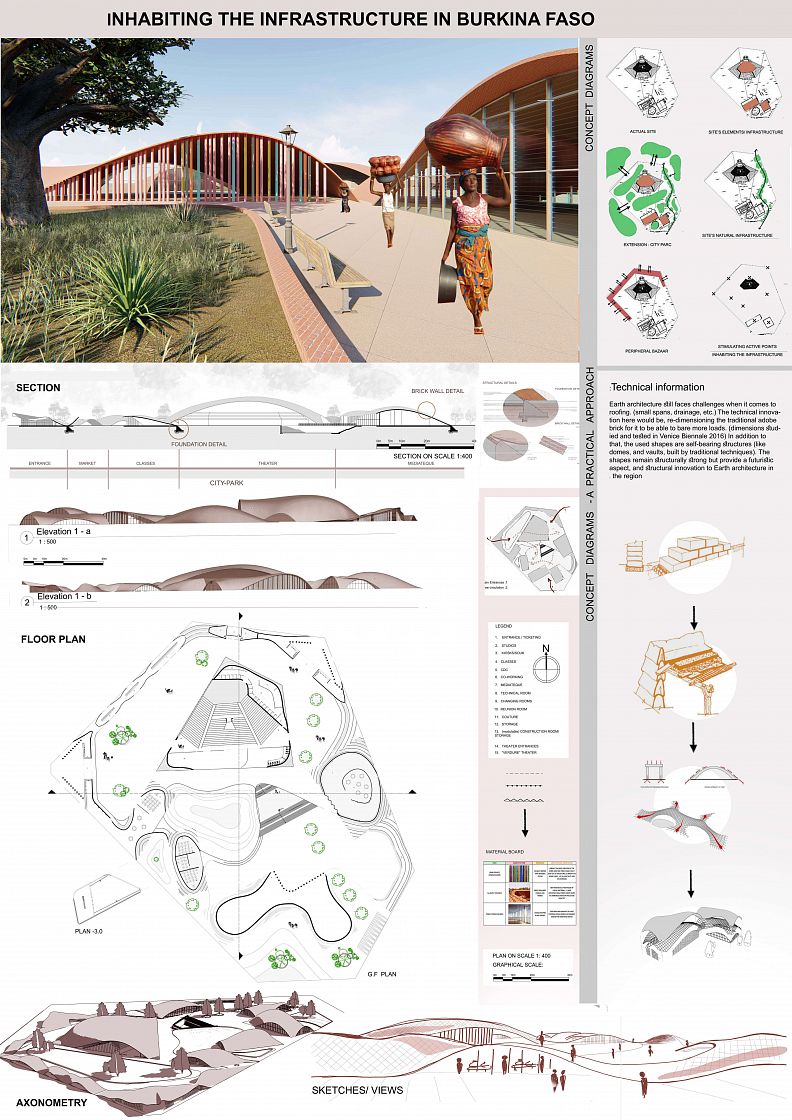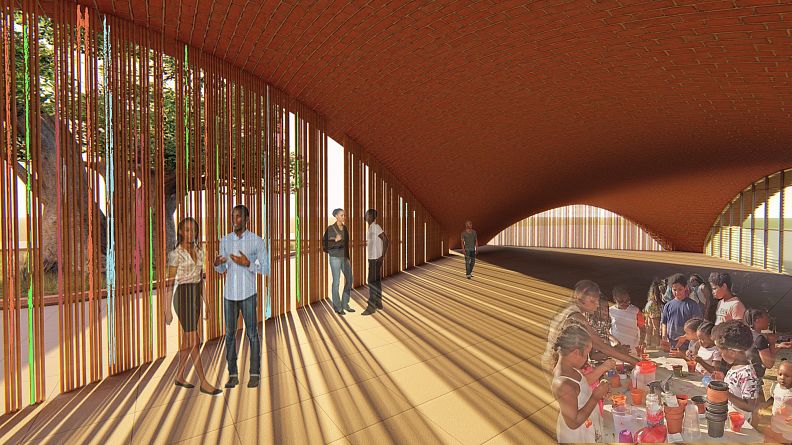Inhabiting Infrastructure in Burkina Faso

Idea projektu
INHABITING THE INFRASTRUCTURE: In a country where infrastructure is one of the weak points of the land, my project’s response was strengthening infrastructure by inhabiting it.
In the city of Ouagadougou in Burkina Faso, the climate is characterized by two extreme weathers; 1 extremely hot and sunny, and 1 warm with heavy rains. For that, a suitable architecture calls for roofing. Construction, is mainly by earth architecture due to the abundance of Earth in the region, but this architecture remains weak on the level of roofs. In response to this, comes my concept which is triggered by the saying “si une termitière vie, c’est qu’elle ajoute de la terre a la terre”. By that, Earth is a material for the past and future. But how to deal with weak roofs? It is fair to say that we took the lesson from tradition, but added architectural innovation to it. Roofs will take the shape of dunes, being self-bearing earthen structures, providing shade, protection from the rain, as well as a futuristic yet humble twist in architecture, which gives hope of development to a modest city.
As these roof structures are built, the architect’s role is over and inhabitants become architects, for architecture to feel like home. For instance, the inhabitants will add their personal touch to the facades. (As they are used to building their own houses as a part of their traditions, and I didn’t want to change that or impose). Practically now, the infrastructure I started working with were an existing green belt (trees), the main theater, and the CDC center. All of which, I considered constructive “infrastructure”. With a site originally containing so much, and will be containing community spaces (the roofs adequate for community gatherings where in Africa usually people teach/preach/learn), I saw that the site was already acting as a city park. For that, I added peripheral souks/bazaar to enhance this aspect and the inner-outer interactions with the urban context. By doing that, I would’ve strengthened a cultural link, and the strongest infrastructure which is society. In brief, by local materials and some existing site elements we learn to do more by less, to notice that less is always always more.
Popis projektu
The project contains 2 main entrances who take the shape of a piece of land peeled from the ground. These two entrances contain the ticketing stands. However, since the project acts as an extended park, it can be accessible from other peripheral areas as well. On one of the peripheries of the site, is located a small bazaar/souk which increases the communication between project and neighborhood. Classes, media-tech, and co-working spaces center the site since they are considered community spaces. As for the theater, it is preserved in its place, but covered with a self-bearing brick structure with painted and colored facades. All complementary stage-spaces lie directly behind the stage. Lastly, the CDC center is also kept in the same location but the roofing is enhanced as well. Facades are painted/adapted to each volume with respect to its function, yet we feel the whole project working in harmony, dancing, with its shapes, colors, and landscape.
Technické informace
Earth architecture still faces challenges when it comes to roofing. (small spans, drainage, etc.) The technical innovation here would be, re-dimensioning the traditional adobe brick for it to be able to bare more loads. (dimensions studied and tested in Venice Biennale 2016) In addition to that, the used shapes are self-bearing structures (like domes, and vaults, built by traditional techniques). The shapes remain structurally strong but provide a futuristic aspect, and structural innovation to Earth architecture in the region. Additional structural details are shown graphically in the attached documents.
















